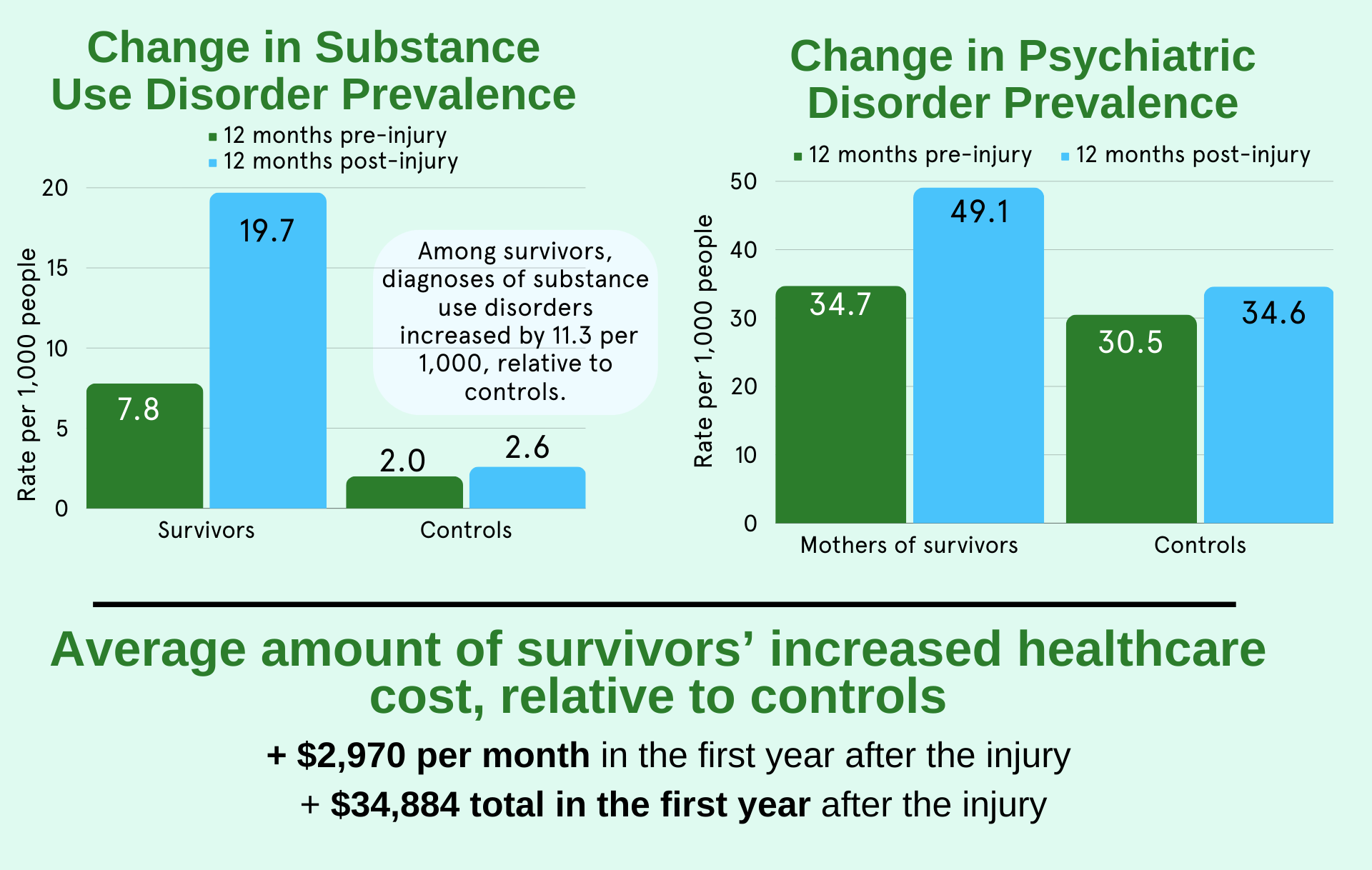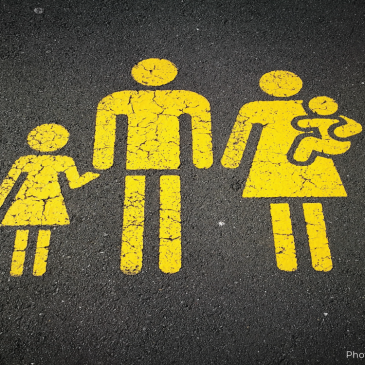In 2020, firearms became the leading cause of death for children and adolescents. Apart from those reported deaths, a significant 80% of youth who sustain firearm injuries survive. The impact of gun violence extends beyond the injured youth, affecting family members, friends, and community members. Because of the strong link between trauma and addiction, it is plausible that children and adolescent survivors of gun violence and their loved ones might experience new-onset substance use disorders among other health consequences. This week, STASH reviews a study by Zirui Song and colleagues that examined whether firearm injuries among US children and adolescents were associated with addiction and other health and economic consequences for victims and their families.
What was the research question?
Do firearm injuries among US children and adolescents impact addiction and other health and economic consequences for victims and their families?
What did the researchers do?
The researchers analyzed data from employee-sponsored insurance claims from 2007-2021, focusing on children and adolescents who experienced firearm injuries and their immediate family members. Individuals were categorized into three exposed groups: (1) child and adolescent survivors of firearm injuries, (2) family members of the survivor, and (3) family members of children and adolescents who died as a result of firearm injuries. Using risk set matching, each injury-exposed individual was paired with up to five unexposed control individuals. This resulted in a total of 2,052 child and adolescent survivors (9,983 matched controls), 6,209 family members of survivors (29,877 matched controls), and 265 family members of deceased children and adolescents (1,263 matched controls).
The primary outcomes of interest included substance use disorders, pain disorders, psychiatric disorders, healthcare spending, and service utilization. The researchers used an ordinary least squares model to compare changes in outcomes between exposed individuals and their matched controls, examining the 12 months before and after the firearms incident. Subgroup analyses looked at differences based on the severity of firearm injury, type of family member, and documented intent behind the injury.
What did they find?
Firearm injuries resulted in significant health and economic consequences for the victims and their families. Survivors of firearm injuries experienced increased likelihood of substance use disorders, pain disorders, psychiatric disorders, and utilization of healthcare services (see Figure). Likewise, family members of survivors, particularly parents, displayed an increase in psychiatric disorders and changes in healthcare utilization (e.g., increased mental health care). Unlike their parents, siblings of survivors did not experience higher rates of psychiatric illness, but, like mothers, their involvement in routine medical care declined. Larger effects were observed among survivors, parents, and siblings when the injuries were more severe. Family members of deceased individuals faced greater health challenges, including new psychiatric disorders, more mental health visits, and more days using psychiatric medication. Notably, mothers of decedents exhibited a 161.2 per 1,000 increase in psychiatric disorders compared to the control group.

Figure. This Figure depicts changes in survivors’ substance use prevalence 12 months pre- and post-injury (relative to controls), changes in psychiatric disorder prevalence among survivors’ mothers 12 months pre- and post-injury (relative to controls), and the average amount of survivors’ increased healthcare cost post-injury (relative to controls). Click image to enlarge.
Why do these findings matter?
These findings suggest that gun violence has significant and lasting effects on the physical health, mental health, and healthcare utilization of survivors and their families. For example, siblings experienced a decline in psychiatric conditions and healthcare visits, which might suggest that they were not negatively impacted by the event. However, given the connection between substance use, psychiatric disorders, and trauma, a more accurate interpretation is that the emotional well-being of siblings after gun violence might have been overlooked. This oversight and lack of support could lead siblings to turn to substances as a way to temporarily relieve their pain. Clinicians can use these findings to enhance their substance use and mental health screening practices by not only screening survivors but also their family members, friends, and classmates. They can also benefit from attending trainings or workshops to improve their knowledge about gun violence and their trauma-informed approach to treatment.
Every study has limitations. What are the limitations in this study?
Because the data was gathered only from individuals with employee-sponsored insurance, these results might not be generalizable to everyone, particularly those with Medicare, other insurance, or no insurance. Additionally, it’s possible that parents or siblings may have had limited contact with the child or adolescent victim on their insurance plan, potentially impacting their diagnoses and subsequent healthcare utilization. The matching results could also be influenced by confounding variables not identified in this study. Lastly, the lack of race and ethnicity data hinders our understanding of diversity within the sample.
For more information:
Sandy Hook Promise offers resources to victims and survivors of gun violence. If you are worried that you or someone you know is experiencing addiction, the SAMHSA National Helpline is a free treatment and information service available 24/7. For more details about addiction, visit our Addiction Resources page.
— Nakita Sconsoni, MSW
What do you think? Please use the comment link below to provide feedback on this article.




